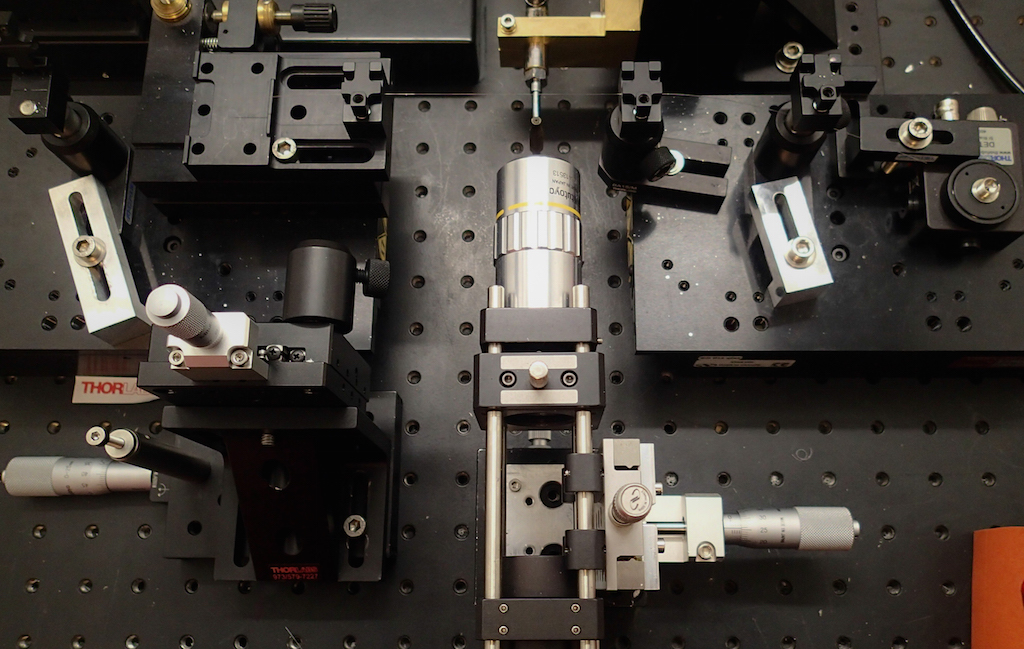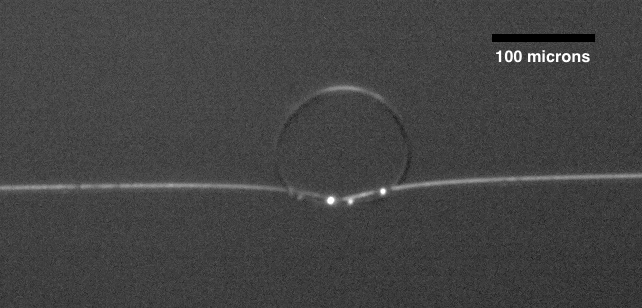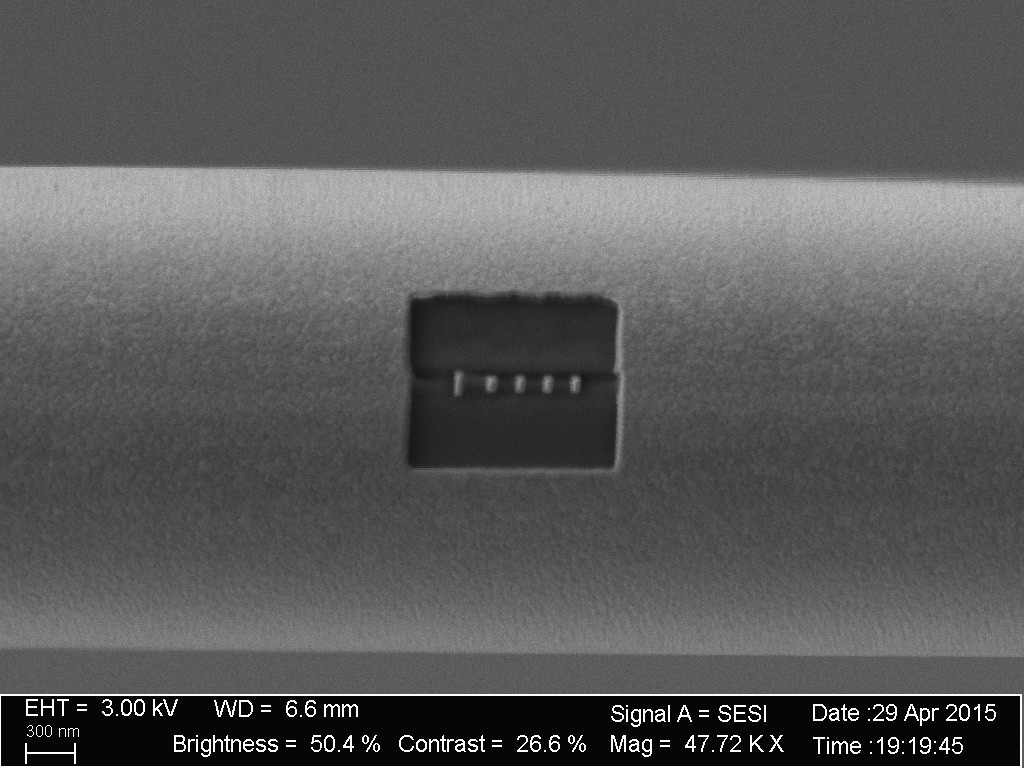Research Topic
One of the most commonly faced problem with semiconductor single photon sources is to implement fluorescence collection with high efficiency. For this purpose many ideas have been proposed. One of the key point is to achieve strong confinement of the field using photonic or plasmonic nanostructures. We are specialized in tapered optical nanofiber engineering to collect single photon emission.
Nano-waveguide fabrication with tapered fiber

Tapered optical nanofiber
There have been spectacular recent successes in this field brought by the merging of nanofiber optical cavity systems with cold neutral atoms. For example, it has been demonstrated that 28% of a single atom fluorescence can be channeled into the guided mode of a sub-wavelength tapered optical nano-fibers (TONF).
We have build a tapering bench based on commercial optical fibers elongated and tapered to 300 nm diameter.
Careful SEM characterizations have demonstrated a good agreement with our simulated pulling profile.
Photonic resonators with nanofibers
Optical cavities are often employed to increase the interaction between light and matter. A natural step forward for nanofiber-based hybrid systems is therefore the use of a cavity that can substantially enhance the coupling of the nano-emitter emission into the nanofiber. Indeed the interaction is enhanced by the transverse confinement of the field in the fiber core as well as the longitudinal confinement of the field between the mirrors. It has been theoretically predicted that the channeling collection efficiency into the nanofiber guided modes can be enhanced to 94% by incorporating a moderate finesse cavity structure to the nanofiber.
Fabry-Perot nanofiber cavities
Recently, various nano-fabrication technologies have been successfully applied to micro/nano-size optical- fibers to create fiber Bragg gratings (FBG) : excimer laser index modification, femtosecond laser ablation, and ion beam milling. Contrary to ion beam milling that requires nanofabrication capabilities, the laser techniques can be implemented directly in an optics laboratory as the LKB. The technique selected for optical writing is based on an excimer laser as it is flexible (grating steps can be adjusted easily) and directly possible to implement in our laboratory with a comparatively limited cost. It has been demonstrated that, with careful control of the grating writing process and good choice of the glass material, a FBG cavity can have a finesse greater than 1000 and a linewidth of a few MHz.
Toroidal resonator with nanofibers
An alternative approach without permanent modification of the fiber structure will also be investigated. This technique relies on a resonator based on a knot of the TONF. By carefully manipulating a TONF, it is possible to realize knots as small as 50 μm in diameter, with an associated free spectral range of 14 nm. Numerical simulations conducted in the LKB group have predicted a finesse of 100 with realistic nanofiber parameters.
Hybrid photonic-plasmonic nanostructures.
In order to strengthen the coupling between the emitters and a tapered optical nanofiber, we are investigating the effect of plasmonic enhancement. The presence of a plasmonic structure at the surface of the nanofiber can result in an increase of the local density of optical states (LDOS) and therefore in an increase of the probability of coupling between the emitter and the dielectric structure. However, due to Ohmic losses, the propagation length of a surface plasmon is much smaller than the propagation length of photons inside an optical fiber. 
Therefore, in order to keep the advantages of both dielectric and plasmonic environments, it will be interesting to limit the plasmon-emitter interaction region to a small size, devoted to the enhancement of the decay rate of the emitter into the guided mode while using the guided mode into the fiber as long range energy transfer vector. We are working to design and optimise these nanostructures by numerical simulations using commercial FDTD softwares.
Structures under study are plasmonic nanoantennas (see image of a Gold Yagi-Uda antenna grown by M. Mivelle on a nanofiber ) and plasmonic gratings. Hot spots of the hybrid mode present in the proximity of the plasmonic structures should ensure a coupling of the fluorescence of emitters with the nanostructure. The use of the fluorescent scanning probe will allow us to position precisely the emitter in correspondence with the hot-spot in order to maximise the coupling of the fluorescence photons into the guided mode and vice-versa.
